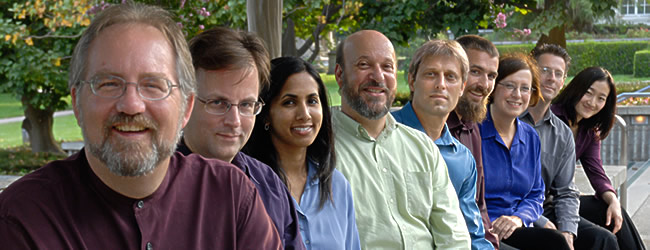Danse sacrée et danse profane (1904) by Claude Debussy
Claude Debussy was born on August 22, 1862, in St. Germain-en-Laye. His parents came from a middle class background and he studied piano with Mme. Maute, the mother-in-law of Paul Verlaine. Debussy's ability was easy to spot. At an early age he traveled throughout Europe in a piano trio with two Russian musicians and Mme. Natalie von Meek, the patron of Tchaikovsky. It is not surprising that one of his strongest influences would come from his study of Modest Mussorgsky's Boris Godunov.
The Danse sacrée et danse profane were composed in 1904 at the specific request of the famous Paris piano manufacturing firm of Pleyel. The works were to help popularize the new chromatic harp – an instrument that abandoned the harp’s pedal mechanism in favor of a separate string for each semitone. The chromatic harp proved to be a failure, but Debussy’s Danse sacrée et danse profane remains among the most popular pieces in the harp repertoire. These two dances, composed in the period after the completion of his opera Pelléas et Mélisande and during the composition of La Mer, present sacred and secular aspects of Debussy’s creative personality. The Danse sacrée returns to antiquity for its atmosphere, much as in his Le Martyre de Saint-Sébastian. The Danse profane is an Impressionistic vision of a pagan world of mythical rite and revelry.
Chant du Linos (1944) by Andre Jolivet
Jolivet was born August 8, 1905, in Paris. His parents were quite talented, his father a painter, his mother a pianist. He developed in multiple worlds, composing, designing scenery and costumes for an early ballet, and allowing himself polar opposite influences in composition. He rigorously learned harmony, counterpoint and classical forms, as well as 15th and 16th century counterpoint. But his main teacher, Paul Le Flem, was also a good friend of that arch modernist, Edgar Varèse. Jolivet avoided any of the systems of the 20th century, but embraced the influence of world music into his compositions. This was especially evident in the piano composition Mana, which received a preface from a very enthusiastic Olivier Messiaen.
The Chant du Linos is one of the great display pieces for the flute. In Greek mythology, Linus was the son of Apollo and Psamathe of Argos. He was deserted by his mother on a hillside and devoured by dogs. When Psamathe’s father learned what his daughter had done, he had her killed. For this double outrage, Apollo cursed Argos with a plague for which there would be no release until Psamathe and Linus were propitiated with prayers and songs of lamentation. The “Linus song,” a lament derived from this legend, was sung at harvest time as a dirge for the dying vegetation. Jolivet was often attracted to the flute for its ancient associations with the origins of music.
Introduction & Allegro (1905) by Maurice Ravel
“In my own composition I judge a long period of gestation necessary. During this interval I come progressively, and with a growing precision, to see the form and the evolution that the final work will take in its totality. Thus I can be occupied for several years without writing a single note of the work, after which the composition goes relatively quickly. But one must spend time in eliminating all that could be regarded as superfluous in order to realize as completely as possible the definitive clarity so much desired."
Born in the Basque town of Ciboure, France, near Biarritz in 1875, Ravel began his musical life as a pianist and later studied composition with Gabriel Fauré, although he was expelled from the Paris Conservatory for not making a first prize in either piano or composition! Today, Ravel is considered a paradigm of celebrated French clarity (in this regard he far outshines the impressionism of his compatriot, Claude Debussy). His entire output is gemlike, from two glowing fairytale operas to Spanish exoticism, Asian mysticism, American jazz, and African mystery. Ravel, indeed, traveled an internal globe throughout his life. The Introduction & Allegro was composed in 1905, after the scandalous reception of his now famous String Quartet in 1903. A concert aria for the harp soloist, the work is luxuriously in D flat major, and features numerous harp cadenzas.
String Quartet in D minor, Op. 10 (1893) by Claude Debussy
The String Quartet is a musical sibling to Debussy's symbolist masterpiece, the opera Pelléas et Mélisande. The quartet was most surely finished during the early stages of the opera's composition. The first movement represents a self-confident break from tradition, for the pure shape of the main theme will assert a greater importance than its initial harmonic structure. This gives Debussy the means to create a perpetual variation of idea, rather than invoking the intervallic development of music influenced by the likes of Bach and Beethoven. The second movement, with its moments in 15/8 meter, is another bold stroke of timbre for timbre's sake. The ostinato and pizzicato variants present a maze of associations with the theme of the first movement. The third movement is a retreat into Debussy's beloved Russian sound world. The melodies, especially for the solo viola, remind one of the famous Garden Scene in Pelléas et Mélisande, when Mélisande loosens her long hair to erotically envelope Pelléas. These melodies are in the same key as similar moments found in the opera. The introduction to the final movement provides a Proustian remembrance of things past before moving forward to a brilliant conclusion in the major key.
Program Notes by Jeff von der Schmidt

